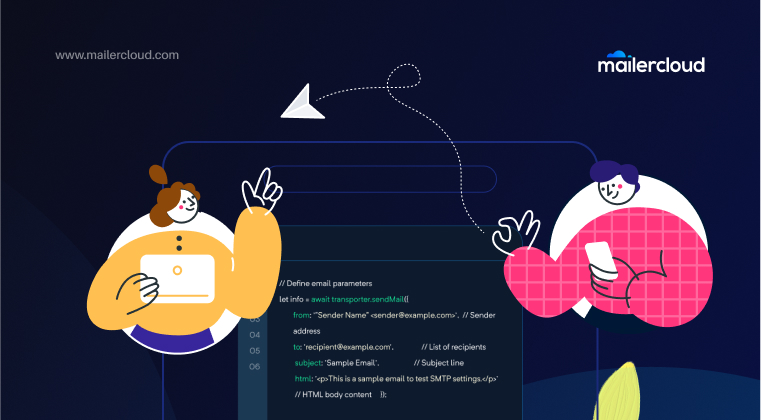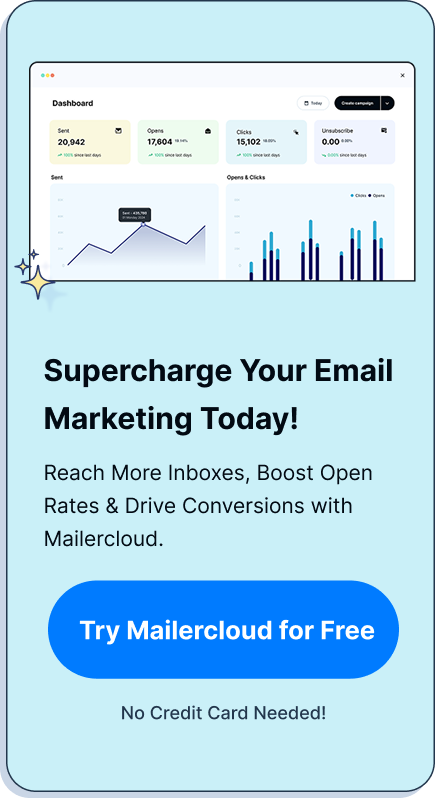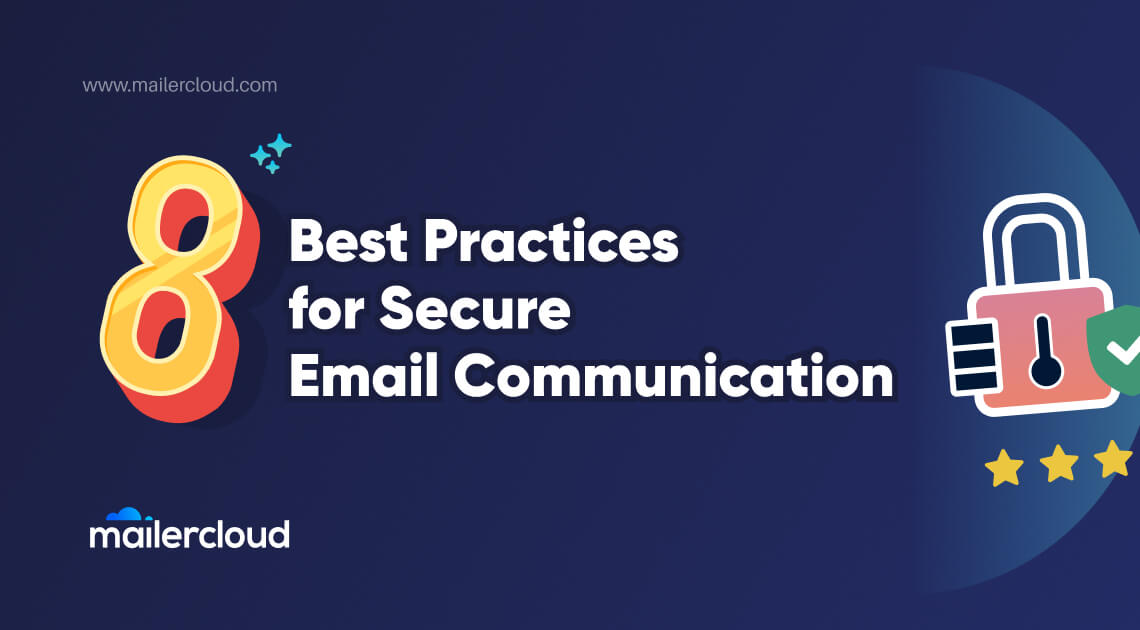Transactional emails are the unsung heroes of customer communication. They are the messages that get delivered directly to your customers’ inboxes in response to their actions, such as order confirmations, password resets, and shipping updates. But how can you ensure these emails are effective, engaging, and enhance the customer experience? In this guide, we’ll delve into the most effective transactional email best practices, showing you how to make the most of these powerful communication tools.
Why Are Transactional Emails Crucial for Customer Experience?
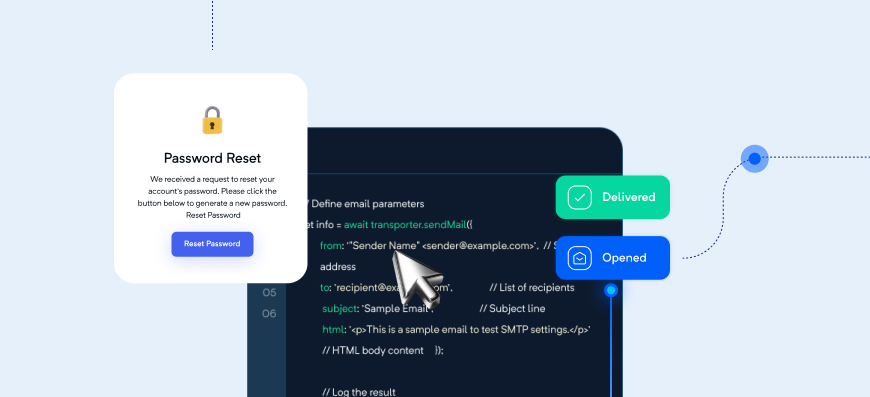
Transactional emails are a key element in shaping your customers’ experience. These emails often represent the first direct communication a customer has with your brand after taking an action like making a purchase or signing up. As such, they play a significant role in establishing trust and reliability.
A well-executed transactional email reassures the customer that their transaction was successful and provides them with the necessary details. It also offers a chance to engage with the customer further by providing additional information or next steps, such as tracking their order or setting up their account. Conversely, a poorly executed transactional email—whether it’s delayed, confusing, or unprofessional—can lead to frustration and a negative perception of your brand.
How to Write Effective Subject Lines for Transactional Emails?
The subject line is one of the most important elements of your transactional email. It’s the first thing your recipients see, and it plays a significant role in whether or not they open the email. To write an effective subject line for a transactional email, it’s important to keep it clear, concise, and directly related to the action that triggered the email.
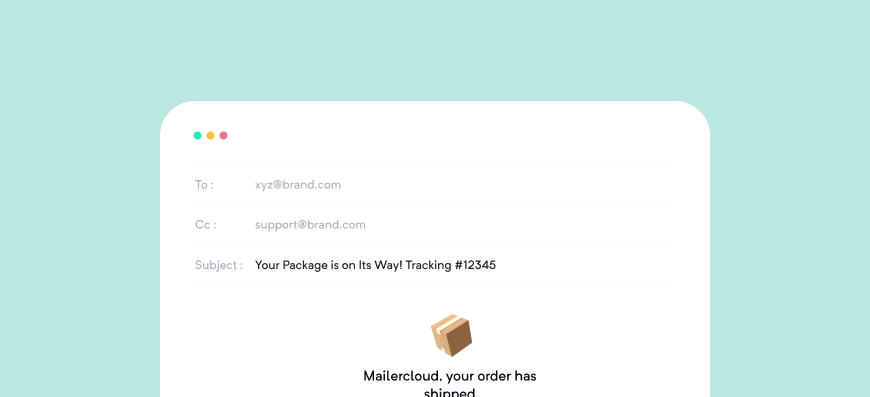
For example, a subject line like “Your Password Reset Request” immediately informs the recipient of the email’s purpose. Avoid using promotional language or unnecessary details, as these can make the email look like spam and reduce its chances of being opened. Additionally, personalizing the subject line by including the recipient’s name or referencing their recent action can make the email feel more relevant and increase its open rate.
10 Best Transactional Email Best Practices
Now that we’ve covered the basics, let’s dive into the top 10 best practices for creating transactional emails that not only deliver the necessary information but also enhance the overall customer experience.
1. Match Your Emails with Your Brand Voice and Design
In the realm of email marketing, consistency is key. Whether you are sending a promotional campaign or an order confirmation email, maintaining a consistent brand voice and design across all your emails is crucial. This is especially true for transactional emails, which are often the most direct line of communication between your brand and your customers.
A transactional email isn’t just a functional message—it’s an extension of your brand. When your transactional messages align with your marketing emails in tone, style, and design, it reinforces your brand identity. This means using the same color schemes, fonts, logo designs, and messaging style in your transactional emails as you do in your marketing campaigns. The goal is to create a seamless experience for your customers, where every type of email they receive from you feels familiar and trustworthy.
For example, Revolut’s free trial expiration email speaks directly to their target audience through a consistent brand voice and design. The email isn’t just about the expiration notice; it’s about reinforcing the brand’s identity and the customer’s experience. This consistency across emails helps build trust and ensures that your customers can recognize your brand immediately, no matter what type of transactional email they receive.
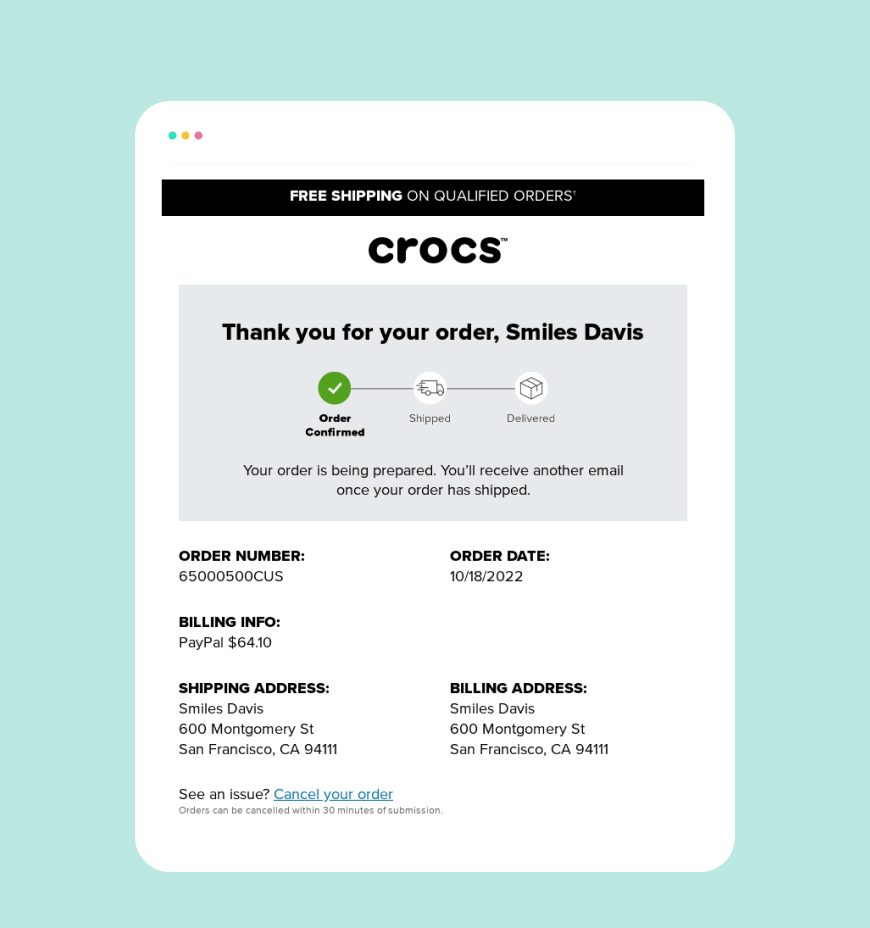
2. Use a Recognizable and Trustworthy Email Address
Your email address is one of the first things a recipient notices when they receive an email. If your transactional emails come from an unfamiliar or cryptic email address, there’s a good chance they will be ignored or sent straight to the spam folder. This can be especially problematic for important messages like password reset emails or refund confirmation emails.
To avoid this, always send transactional emails from a recognizable and trustworthy email address. This means using a clear “From” name that matches your brand, such as “YourBrand Orders” or “YourBrand Support.” Additionally, avoid using odd email sub-domains that might confuse recipients or appear suspicious.
Email sub-domains are one click away from being deleted if they don’t align with the main domain your customers expect. For example, if your website is “yourbrand.com,” your transactional emails should come from something like “[email protected]” rather than “[email protected].” This simple step can significantly enhance trust and improve email deliverability, ensuring that your important messages like refund confirmation emails and welcome emails reach your customers.
3. Avoid Using “No-Reply” Email Addresses
One of the most common mistakes in email marketing, particularly with transactional messages, is using a “no-reply” email address. While it might seem convenient to prevent inbox clutter, it sends a negative message to your customers. It essentially tells them that you’re not interested in their feedback or that you don’t care if they have questions or concerns.
Instead of a “no-reply” email address, use a monitored email address that allows recipients to respond directly. For example, “[email protected]” or “[email protected]” not only keeps communication open but also improves the customer experience by showing that you value their interaction. If managing replies directly isn’t feasible, include a clear and easy way for recipients to contact your customer service team within the email content.
This approach not only enhances engagement but also contributes to better email deliverability. Emails that invite interaction are less likely to end up in the spam folder, meaning your important transactional emails, like those involving account updates or order confirmations, are more likely to be seen and acted upon.
4. Be Concise with Your Subject Line and Pre-Header Text
When it comes to transactional emails, the subject line and pre-header text are critical. Unlike marketing emails, where you might experiment with creative subject lines to entice opens, transactional emails should be straightforward and to the point. The primary purpose of your email should be clear from the moment your recipient sees the subject line in their inbox.
For example, if you’re sending a password reset email, a subject line like “Reset Your Password for YourBrand” is concise and leaves no room for confusion. Pairing this with a relevant pre-header text, such as “Click the link below to reset your password,” reinforces the message and provides a brief preview of the email content.
Keeping your subject line short and relevant helps improve open rates and ensures that your emails don’t get lost in a crowded inbox. Moreover, it’s crucial to avoid using dates, months, or unnecessary details in the subject line, as these can reduce clarity and potentially trigger spam filters.
5. Keep Promotional Content Separate from Transactional Emails
Transactional emails are primarily meant to communicate essential information related to a specific action taken by the customer. Mixing promotional content with these emails can dilute the message and confuse the recipient. It can also negatively impact your email deliverability, as promotional content is more likely to trigger spam filters.
For instance, Amazon often sends two separate emails: one for promotional offers and another for transactional messages like order confirmations. This separation ensures that the primary purpose of each email is clear, and it helps maintain high deliverability rates for important transactional emails.
If you do decide to include promotional content in your transactional emails, make sure it is subtle and secondary to the main message. For example, you might include a small section at the bottom of an order confirmation email offering a discount on a related product, but the focus should remain on the order details.
6. Use Clear and Actionable Calls-to-Action (CTAs)
Even though transactional emails are primarily informational, they should still include clear and actionable calls-to-action (CTAs). Whether it’s directing the recipient to track their order, complete their account setup, or contact customer support, the CTA should stand out and guide the recipient on what to do next.
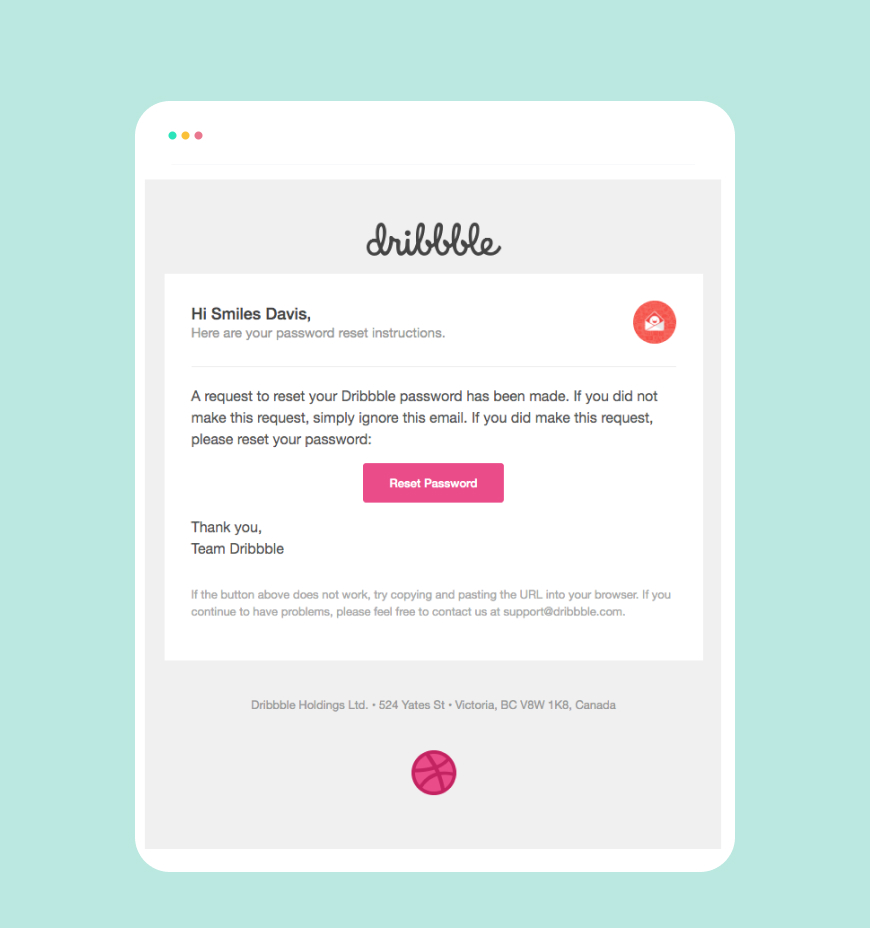
For example, in a password reset email, the CTA button should clearly say something like “Reset Your Password” and be prominently placed in the email design. The button should also be large enough to easily tap on mobile devices, as many users will open these emails on their phones.
A great transactional email not only delivers the necessary information but also makes it easy for the recipient to take the next step. By ensuring that your CTAs are clear, concise, and visually distinct, you can improve engagement and provide a better user experience.
7. Optimize Your Email Footer
The email footer is often an overlooked aspect of email design, but it’s a valuable space for providing additional information and resources. An optimized email footer can include links to your privacy policy, terms of service, customer support, and social media profiles. It’s also a good place to include any necessary legal disclaimers or unsubscribe options if applicable.
For example, Cult Beauty’s email footer is an excellent example of using this often overlooked email real estate to its full potential. Their footer includes not only the standard contact information and social media links but also additional resources like shipping information, FAQs, and links to their blog.

By optimizing your email footer, you provide your customers with easy access to important information and resources, enhancing their overall experience and making your emails more useful.
8. Ensure Your Emails Are Mobile-Responsive
In today’s mobile-first world, ensuring that your transactional emails are mobile-responsive is crucial. A significant portion of emails are opened on mobile devices, so your email design needs to be flexible enough to look good on screens of all sizes.
A mobile-responsive email design automatically adjusts to fit the screen it’s being viewed on, whether that’s a smartphone, tablet, or desktop. This means using a simple layout with large, easy-to-tap buttons, readable fonts, and a clear hierarchy of information. For instance, Foodpanda’s order confirmation email is perfectly sized for mobile screens, ensuring that users can easily read and interact with the content without needing to zoom in or scroll excessively.
By designing for mobile first, you ensure that all your recipients, regardless of device, have a positive experience with your emails.
9. Include a Plain Text Version of Your Email
Providing a plain text version of your transactional email is an important step in ensuring accessibility and improving deliverability. Some recipients may only have access to low-bandwidth networks or may use screen readers or other assistive technologies that require a simpler email format.
A plain text version of your email strips away all the HTML formatting, providing a simple, text-only version of your message. This ensures that your email can be read by everyone, regardless of their device or email client. It also helps avoid potential issues with spam filters, as some filters are more likely to flag emails that don’t include a plain text version.
For example, Amazon Fresh pairs a plain text email with its HTML version, ensuring that the messaging is consistent across both formats and accessible to all recipients.
Including a plain text version of your email is a best practice that can help you reach the widest possible audience and improve the overall performance of your transactional email campaigns.
10. Monitor and Analyze Email Performance
Creating and sending transactional emails is just the beginning; the real value comes from monitoring their performance and making data-driven improvements. By regularly analyzing key metrics such as open rates, click-through rates, conversion rates, and bounce rates, you can gain insights into how your emails are performing and identify areas for optimization.
Tools provided by your email service provider can help you track these metrics in real-time. For example, if you notice a lower-than-expected open rate on your password reset emails, it might be worth revisiting the subject line or pre-header text to ensure they clearly convey the urgency and importance of the message.
Another important aspect of monitoring email performance is watching for deliverability issues. Emails that consistently end up in the spam folder can damage your sender reputation and limit the effectiveness of your transactional messages. Regularly check your spam rates, and if you notice an increase, take steps to address potential issues, such as refining your email content or ensuring proper authentication with SPF, DKIM, and DMARC.
Monitoring performance isn’t just about fixing problems; it’s also about finding opportunities for improvement. For example, you might discover that adding a personalized element to your order confirmation email increases engagement, or that including a social media follow-up CTA in your welcome email drives more traffic to your profiles.
By continuously monitoring and analyzing the performance of your transactional emails, you can ensure they are delivering the best possible experience to your customers and contributing to the overall success of your email marketing campaigns.
Key Takeaways
- Ensure Brand Consistency: Match your transactional emails with your brand’s voice and design.
- Use Recognizable Email Addresses: Send emails from trusted and clear email addresses.
- Keep Communication Open: Avoid using “no-reply” addresses to allow customer engagement.
- Be Clear and Concise: Keep subject lines and pre-header text straightforward.
- Separate Promotional Content: Don’t mix promotional messages with transactional content.
- Use Strong CTAs: Include clear and actionable calls-to-action in every email.
- Optimize the Email Footer: Utilize the footer to provide additional information and resources.
- Design for Mobile: Ensure your emails are mobile-responsive for better accessibility.
- Include Plain Text Versions: Enhance accessibility with plain text versions of your emails.
- Continuously Monitor Performance: Analyze key metrics to improve your transactional email strategy.
By following these best practices, you can create transactional emails that not only fulfill their primary purpose but also contribute to a positive and engaging customer experience.
As a Marketing Director, I develop and implement marketing strategies, conduct market research, and manage a team of marketing professionals. With a successful track record of launching campaigns that drive revenue growth, I bring my marketing expertise to blog writing, creating engaging content that promotes the brand and its products/services.





























